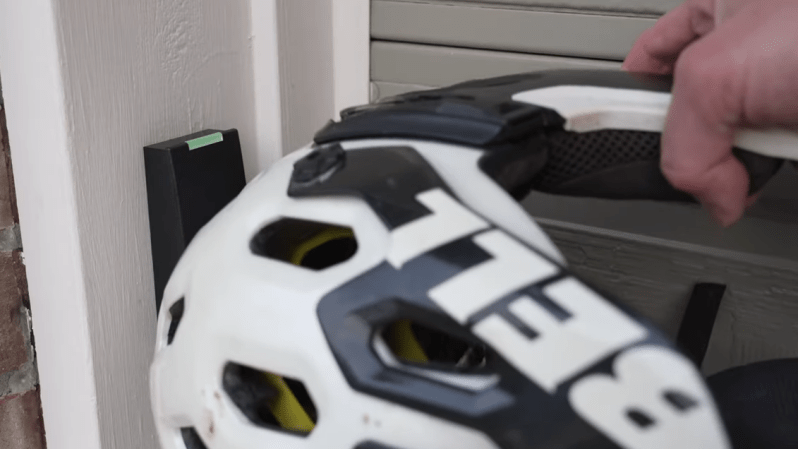[Glen] might describe his project of opening his garage door by way of an RFID sticker on his bike helmet as simple, but some of the interfacing he needed to do was quite complex. He walks through the project from beginning to end, and there’s plenty to learn from.
When designing an RFID access control system, one has to decide what kind of reader and what kind of tags one wishes to use. They all function more or less the same way, but there are a lot of practical considerations to take into account such as cost, range, ease of use, and security options. After a lot of research, [Glen] decided on inexpensive sticker-style tags and a compatible reader supporting credentials with an ISO14443 UID that could be suitably mounted on a building’s exterior.

Breakout boards with ready-to-use code libraries exist for some RFID readers, but that wasn’t the case for the reader [Glen] had. He ended up rolling his own code to handle communication with the reader, with a Microchip PIC18F45K50 doing all the work of reading tags and performing access control. His code is on the project’s GitHub repository, and if you also find yourself needing to interface to a reader that uses the Wiegand protocol, you might want to give it a look.
Controlling the actual garage door was the easy part. All that took was soldering two wires across the switch contacts of a spare garage door opener remote, and using a relay to close the contacts. Simple and effective. You can see it in action in the short video, embedded below the break.
Overhead door access control might be a simple concept, but it comes in all shapes and sizes when enterprising hackers start looking for solutions. We’ve seen garage doors given the DIY IoT treatment, and even seen access controlled by a car’s headlamp flashes, which actually turned out to be more secure than it sounds.
















The first bike helmet (laminated piece of Styrofoam) that actually does something significantly useful! I’d opt for a key-fob, but that is just me.
LOLWUT? You must be a Harley rider
Interesting! An application where a laminated piece of styrofoam does something useful for a change! I’d opt for a key fob, but it is progress of a kind!
Show us on the doll where the helmet touched you.
Helmets (yes, laminated foam) have been proven to cause a significant reduction in the severity of brain injuries due to a crash. The science is very well established, and there are numerous testing protocols which back it up.
Would be smarter if it was placed in the back hand of an glove.
It’s a good write up and overview of RFID badge readers. But why did it take 15 months to get picked up by HAD? Y’all covered his DIP switch build within days of the blog post, and this project is older than that.
Cool project but if he already had a door remote, just take that with you? It’s been bomb proof method for me every day.
This is done decently; I have seen some horrible versions. I have made numerous for friends using RFID, 433mhz, and one used a custom magnet based “key”. However, the last one was about 12 years ago. All of mine tapped into a screw terminal on the opener or to two pins on the back of the wall mount button. Do newer openers only have coded inputs to make that easy route not possible? Sacrificing a remote basically does the same method, but sometimes remotes are costly for a project.
yes, sadly, while the rfid part is somewhat secure, just reusing the 433Mhz remote is not, it should have been bypassed for a direct control ideally… nice project and well documented through, thanks!
I was wondering the same thing. If you have the doorbell type button inside your garage, can’t you just wire that card reader relay output to the same thing? There are screw terminals on the door opener just for this reason.
That’s what I did with a cheapo wifi controller I got from amazon. It’s just a wifi relay and I hooked it right to the same port that the inside button is hooked to.